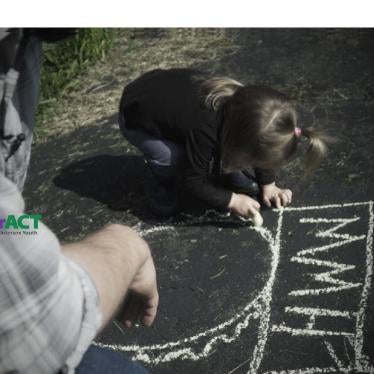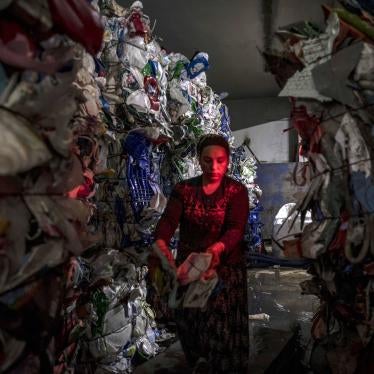Recent experience in southern Sudan has demonstrated that the fighting now in progress will provoke a new humanitarian disaster, unless immediately checked.
The Nuer are already conducting inter-Nuer warfare. In addition, the Nuer and the Dinka are currently poised to go to war against each other; the Dinka are the largest tribe in southern Sudan, and the Nuer, the second largest. They are neighbors and cousins, sharing many customs and beliefs. History has shown that peace in the south is impossible if these two tribes are fighting each other.
The way that inter-Nuer and Nuer-Dinka war have been conducted recently is in violation of both traditional Nuer and Dinka practices of war and international humanitarian law, namely: burning homes, villages, community structures, and grain, and killing women and children. These types of abuses have been the proximate cause of several famines in recent years.
One example was the famine that hit the East Bank of the Nile in 1993, where tens of thousands died in the "Hunger Triangle" (formed by Adok, Waat, and Kongor, villages straddling the Nuer/Dinka divide). This crisis was precipitated by Nuer/Dinka fighting (1991-93), also in disregard of tribal and international rules of war, which grew out of the 1991 split in the Sudan People´s Liberation Army (SPLA) led by Riek Machar.
The fighting in 2001 is not traditional tribal conflict, because many other actors with their own agendas have inserted themselves. In addition to the government army, the other organized military players sharing the blame for this looming disaster are the government-backed Nuer militias, particularly the militias of Gordon Kong Chuol and Simon Gatwich; the Sudan People´s Democratic Front/Defense Forces (SPDF) of Nuer leader Riek Machar; and the SPLA.
In Eastern Upper Nile, the Nuer government militias and Sudan army are fighting against Riek Machar SPDF (Nuer) forces and the SPLA. Militia Cmdr. Gordon Kong of Nasir is active in trying to drive out these forces from areas adjacent to oilfields that are in development. In the process many civilians have been killed and forcibly displaced. His militia has even placed landmines in the compounds of relief organizations.
In Central Upper Nile, other SPLA (Nuer) forces have fought the SPDF (Nuer), with the result that government forces have captured towns not in government control for more than a decade. Cmdr. Simon Gatwich, another Nuer pro-government militia leader, joined the fighting, and reportedly threatened to lead a Nuer retaliatory attack on the Dinka.
Riek Machar, formerly military and political leader of the rebel Nuer, has compounded these Nuer divisions. He started out as a rebel, split from the SPLA (and began cooperating with the Khartoum government) in 1991, and in 1996 reached a formal agreement with Khartoum. In 2000 he resigned from the government and formed another rebel faction, the SPDF. However, he made so many enemies that it now appears that the Nuer government militias and other Nuer joined informally with the SPLA to put an end to Riek Machar´s career. The Riek Machar SPDF forces initially received some SPLA military supplies, but when those dried up in mid-2000, they turned back to the government, their supplier of last resort. In recent months, SPDF forces are accused of carrying out scorched earth campaigns in the Nuer villages of Nhialdu and Mankien (the base of rival SPLA Nuer forces under Cmdr. Peter Gatdet).
The situation was further exacerbated by the SPLA´s entry into the fray, which threatens to broaden the conflict into a Nuer/Dinka clash. Nuer commander Peter Gatdet defected from a government militia in 1999 and joined the SPLA. His followers, the Bul Nuer and others, are strategically situated on the edge of the oilfields currently under development by international oil companies in Western Upper Nile. While Cmdr. Peter Gatdet in 1999-2000 attacked these targets - where civilian population is thin due to prior forced displacement by the government - in 2001 the Peter Gatdet SPLA forces ranged far from the oilfields. Apparently with SPLA logistical support from Rumbek and possibly with Dinka SPLA soldiers, the Gatdet SPLA forces attacked heavily-populated Nuer territory more than one hundred miles to the south of the oilfields - a considerable distance in view of the lack of roads and surfeit of flooding and swamps. There, in Pabuong and Nyal, the Peter Gatdet (Nuer) SPLA fought against Riek Machar´s SPDF troops and burned out the civilian population, forcing them to flee. Members of Peter Gatdet´s forces suggest this was in retaliation for similar raids earlier this year on Peter Gatdet´s home turf by SPDF Cmdr. Peter Paar.
The immediate danger of SPLA (Nuer) versus Riek Machar/SPDF (Nuer) fighting is that many Nuer see the SPLA as a Dinka army and consider this SPLA advance into Nyal a Dinka advance into Nuer territory. Now Nuer talk of taking "revenge" on the Dinka and attacking Dinka villages. This imperils not only Dinka civilians who have moved back to their border villages on the West Bank of the Nile, trusting in Wunlit. It also exposes to danger of retaliation the tens of thousands of Nuer internally displaced persons who took refuge in Dinka areas, likewise trusting in Wunlit. These displaced Nuer were expelled from their homes by the Khartoum government in 1999-2000 to erect a cordon sanitaire for the oil companies.
Another complicating factor is the presence of international relief. The SPLA (Nuer) see their attacks on the Riek Machar forces as a type of "getting even" for the fact that the SPLA (Nuer) have been starved and denied their "fair share" of international aid by the Riek Machar faction. There is no doubt that the SPLA (Nuer) area has not been receiving as much aid as other areas; there are many reasons for that.
One reason is that the international aid community has not been diligent enough in the past year and a half in addressing this situation. Judicious attention to this real or perceived grievance could play a large role in smoothing the waters. In 1991, the perceived lack of fairness in distribution of relief among Dinka and Nuer led, in part, to a devastating series of raids by Nuer into Dinka Bor County, known as the "Bor Massacre," where an estimated 2,000 Dinka civilians were killed.






